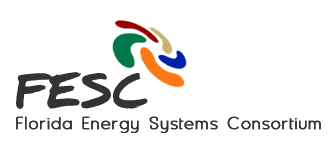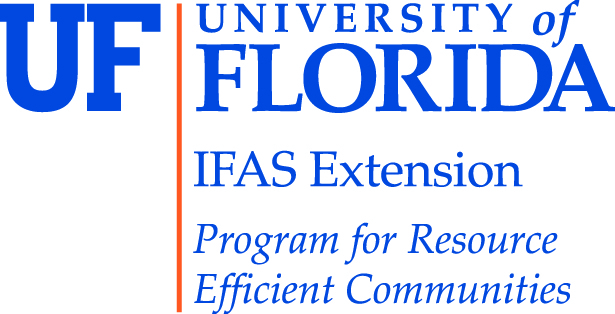Credit: Portions of this resource are excerpted and adapted from Miller, C., Sullivan, J., and Ahrentzen, S. (2012). Energy Efficient Building Construction in Florida. ISBN 978-0-9852487-0-3. University of Florida, Gainesville, FL. 7TH Edition.
An energy efficient building contractor, homebuyer, and/or homeowner seeks to minimize the lifetime costs of a home rather than the first costs. Making such calculations can be time-consuming and confusing. One of the best ways to determine the cost effectiveness of a home energy efficiency investment is to calculate the Net Annual Savings. This calculation compares the annual energy savings to the home improvement costs (e.g., cash, credit, loan) to generate a ratio of cost effectiveness.
A Home Improvement Cost Effectiveness Evaluation Example
Suppose you are wondering if it is worthwhile for a home to have high efficiency, low-e windows, which use special coatings to reduce heat loss and gain. A homebuyer had planned to install 2-pane (i.e., double-glazed) units, but is now considering an upgrade to 2-pane, low-e units. The homebuyer receives the following information from a the building contractor and their window dealer:
- Additional Window Cost = $500
- First Year Energy Savings = $75
Assuming annual energy savings remain stable (which is not always the case), the homebuyer can calculate that the simple payback period on the above investment is just under 7 years by dividing the total additional costs by the first year energy savings ($500 / $75 per year = 6.67 years). However, a homebuyer may still be unsure if this energy payback is acceptable. To find the Net Annual Savings, first, the homebuyer finds the extra mortgage costs for the windows:
- Mortgage Interest Rate = 5.0%
- Term of Mortgage = 30 years
- Monthly Payment per $1,000 (from our Financing Rate and Payment Tables) = $5.37
- Annual Payment per $1 (multiply the above by 12 and divide by 1,000) = $.064
- Extra Annual Payment (multiply the additional cost of the windows by the above factor) = $500 × $.064 = $32
- Net Annual Energy Savings (subtract the annual payment from annual energy savings) = $75 – $32 = $43
Since the Net Annual Energy Savings is positive, the investment is cost effective, especially when considering that energy costs are likely to increase over time, while mortgage costs may remain relatively constant (e.g., a fixed rate loan).
Rate of Return (ROR) on Energy Investments
It may also be useful to calculate the Rate of Return (ROR) for an energy investment. Homeowners can compare the annual percentage return for an energy measure to that earned by their financial investment. The steps for finding the ROR, using the above example, are as follows:
- Find the payback period (divide the total cost by the annual savings) = 500/75 = about 6.7 years
- Determine the life of the energy measure = approximately 20 years
- For the payback period and lifetime, find the ROR (see Table 1) = more than 20 percent, but less than 23 percent (and it’s tax free)
Table 1. Rate of Return for Energy Investments (%)
| Energy Payback Period (years) | 5 | 7 | 10 | 12 | 15 | 17 | 20 | |
| 1.5 | 71% | 75% | 77% | 77% | 77% | 77% | 77% | |
| 2 | 50% | 56% | 59% | 59% | 59% | 59% | 59% | |
| 3 | 27% | 35% | 39% | 41% | 41% | 42% | 42% | |
| 4 | 15% | 24% | 29% | 31% | 32% | 32% | 33% | |
| 5 | 6% | 16% | 22% | 24% | 26% | 26% | 27% | |
| 6 | 0 | 11% | 18% | 20% | 22% | 22% | 23% | |
| 7 | 0 | 6% | 14% | 16% | 19% | 19% | 20% | |
| 8 | 0 | 3% | 11% | 14% | 16% | 17% | 18% | |
| 9 | 0 | 0 | 8% | 11% | 14% | 15% | 16% | |
| 10 | 0 | 0 | 6% | 9% | 12% | 13% | 15% | |
| 11 | 0 | 0 | 5% | 8% | 11% | 12% | 13% | |
| 12 | 0 | 0 | 3% | 6% | 9% | 11% | 12% | |
| 13 | 0 | 0 | 2% | 5% | 8% | 10% | 11% | |
| 14 | 0 | 0 | 0 | 4% | 7% | 9% | 10% | |
| 15 | 0 | 0 | 0 | 3% | 6% | 8% | 9% | |
| 16 | 0 | 0 | 0 | 2% | 5% | 7% | 9% | |
| 17 | 0 | 0 | 0 | 1% | 5% | 6% | 8% | |
| 18 | 0 | 0 | 0 | 0 | 3% | 5% | 7% | |
| 19 | 0 | 0 | 0 | 0 | 3% | 5% | 7% | |
| 20 | 0 | 0 | 0 | 0 | 3% | 4% | 6% | |
Note: A zero indicates the rate of return (ROR) on the investment is either negligible or negative. The table assumes energy prices escalate 6.33 percent per year.
References and Resources
Miller, C., Sullivan, J., and Ahrentzen, S. (2012). Energy Efficient Building Construction in Florida. ISBN 978-0-9852487-0-3. University of Florida, Gainesville, FL. 7th Edition.
Acknowledgements
Authors: Craig Millera, James G. Sullivanb, and Sherry Ahrentzenb
a Program for Resource Efficient Communities, Florida Cooperative Extension Service, Institute of Food and Agricultural Sciences, University of Florida, Gainesville, FL
b M.E. Rinker, Sr. School of Construction Management, College of Design, Construction, and Planning, University of Florida, Gainesville, FL
First published June 2013. Revised June 2015.
This is a fact sheet produced for the Florida Energy Systems Consortium (FESC). The goal of the consortium is to become a world leader in energy research, education, technology, and energy systems analysis.




